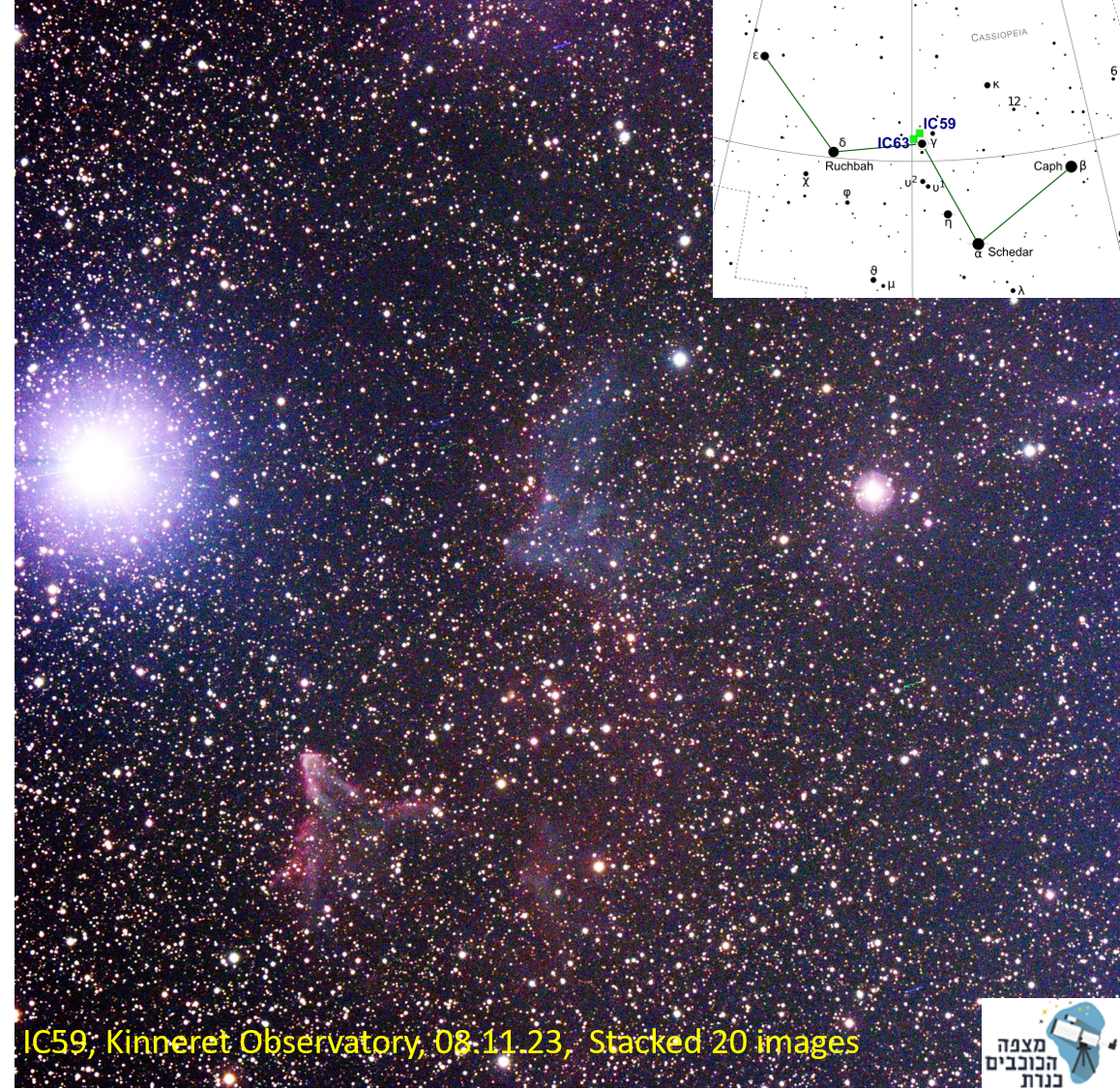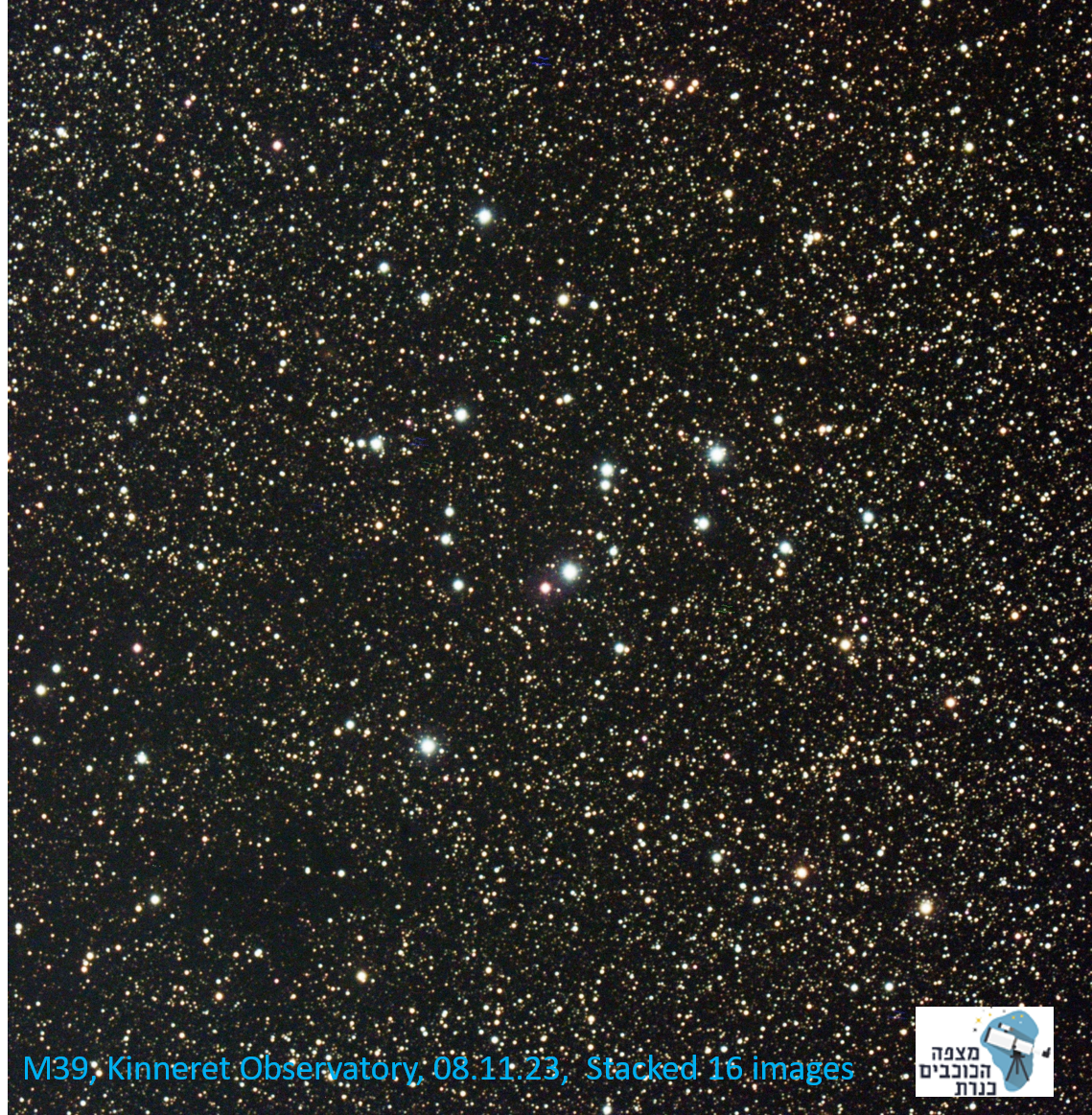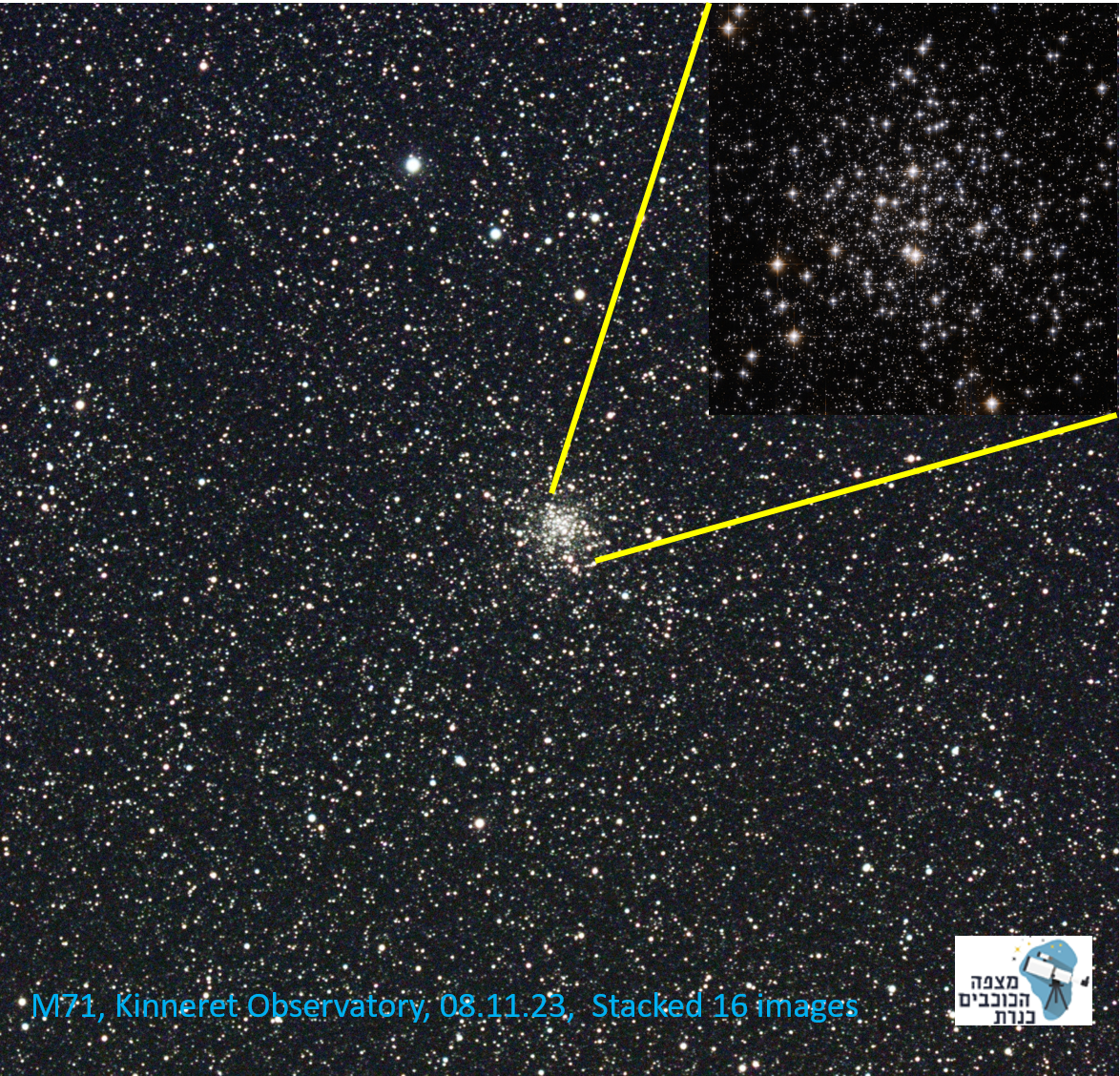
Messier 43 or M43, also known as De Mairan’s Nebula and NGC 1982, is a star-forming nebula with a prominent H II region in the equatorial constellation of Orion. It was discovered by the French scientist Jean-Jacques d’Ortous de Mairan sometime before 1731 and cataloged by Charles Messier in 1769. It is physically part of the Orion Nebula (Messier 42), separated from that central nebula by a dense lane of dust known as the northeast dark lane. It is part of the much larger Orion molecular cloud complex.
The main ionizing star in this nebula is HD 37061 (variable star designation NU Ori), the focus of the H II region, 1,300 ± 160 ly (400 ± 50 pc) away.[c] This is a triple star system with the brighter component being a single-lined spectroscopic binary. The main component is a blue-white-hued B-type main-sequence star with a stellar classification of B0.5V or B1V. It has 19±7 times the mass of the Sun (M☉) and 5.7±0.8 times the Sun’s radius (R☉). It radiates over 26,000 times the Sun’s luminosity (L☉) from its photosphere at an effective temperature of 31,000 K. It spins rapidly with a projected rotational velocity of around 200 km/s.
The H II region is a roundish volume of ionized hydrogen. Its diameter is about 4.5′, at its distance, meaning it measures 2.1 ly (0.65 pc). This region’s net (meaning omitting the star) hydrogen alpha luminosity is (3.0±1.1)×10^35 erg s^(−1), equivalent to 78 L☉. A dark lane crossing the whole west-center strip from north to south, known as the M43 dark lane, forms a swirling belt extension to the south and links to Orion’s northeast dark lane. All of these resemble a mixture of smoke rising from a chimney and in watercolor broad and delicate dark brushstrokes at many wavelengths.



